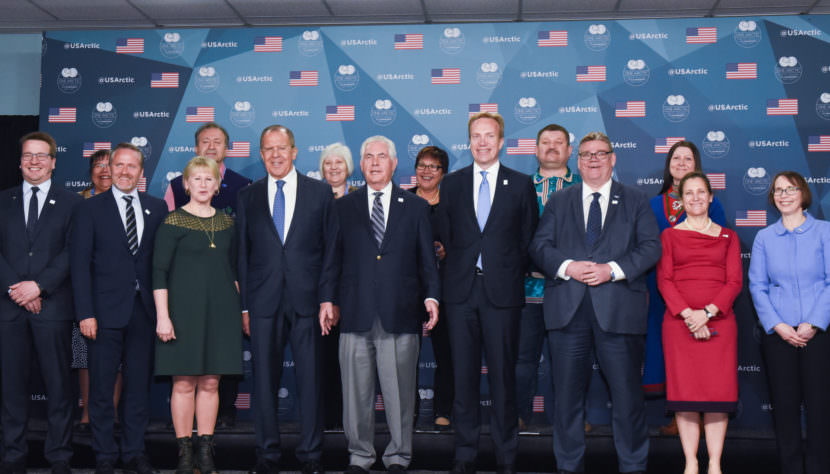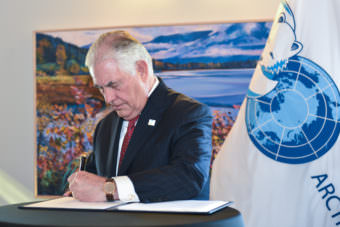
What happens in the Arctic doesn’t stay in the Arctic, and vice versa.
That’s the frequent mantra of members of the Arctic Council as they work to document, and come up with ways to mitigate or adapt to the effects of climate change and pollutants on the Arctic environment.
Working groups do much of the nuts-and-bolts work of the intergovernmental forum made up of the Arctic’s eight countries and six indigenous groups.
Chairs of each of the six working groups provided a brief overview Wednesday morning in Fairbanks that was repeatedly characterized as a speed dating session.
“I like this exercise, speed dating. But I don’t necessarily want you to like me,” joked Ulrik Westman, head of the working group focusing on contaminants in the Arctic. “I just want you to stop – I want us all to stop polluting the environment and to take care about the mess that we have created.”
Westman said they’re trying to limit various pollutants from a northwest Russia cement plant, and they’ve helped convert diesel generators on Russia’s Kola Peninsula to wind-diesel hybrid power generation, reducing black carbon emission.

They’re also trying to find a way to destroy obsolete Russian pesticides and safely destroy 250 tons of PCBs (polychlorinated biphenyls) from Russian transformers. Such contaminants could affect wildlife habitat throughout the Arctic environment.
The group focusing on Arctic search and rescue, and spill prevention and response said they’ve put together an online database showing assets that have already been deployed around the Arctic in the event of a possible spill.
Another map shows each community’s response capabilities.
Amy Merten is chair of that group, which also planned for a table-top exercise.
“The leadership for the exercise follows the overall chairmanship. So, Finland will host the next exercise in 2018,” Merten said. “They’re looking at doing a search and rescue and an oil spill response scenario, which is really fantastic.”
Merten said they’re also developing plans for dealing with radiological emergencies, such as vessels carrying radioactive substances.
Reidar Hindrum, head of the working group focusing on conservation of Arctic flora and fauna, said they’re working on protecting migratory bird populations and breeding areas in the Arctic. They’re also drafting a plan to prevent the arrival of more “invasive alien species.”
“Many of these may be invasive and compete with aboriginal species up in (the) Arctic, and make big changes,” Hindrum said.
Martin Forsius, head of the working group focusing on monitoring and assessment, said the Arctic’s climate already is shifting to a new state of existence.
Past greenhouse gas emissions and ocean heat storage mean temperatures will continue to rise until at least mid-century.
“Regardless whatever is done for mitigation, there will be change up to the mid-century,” Forsius said. “But then after that, this has a really major implication on what’s going on or what will happen in the Arctic.”
Worst-case scenario includes a temperature increase of 8 degrees Celsius by the end of the century, while best case is only 3 degrees. He said the future of the Arctic depends on how much we’re willing to reduce greenhouse gas emissions now.
Forsius said they’re now looking at the impacts of other “chemicals of emerging concern,” such as from cosmetics and pharmaceuticals, and how they may affect the Arctic environment and human health.
Foreign ministers from the Arctic Council’s eight member nations were scheduled to consider some of the projects and initiatives during their meeting in Fairbanks this week.
In addition to the six Arctic indigenous groups, representatives from 30 non-government organizations and non-Arctic nations also participate in Arctic Council activities.
